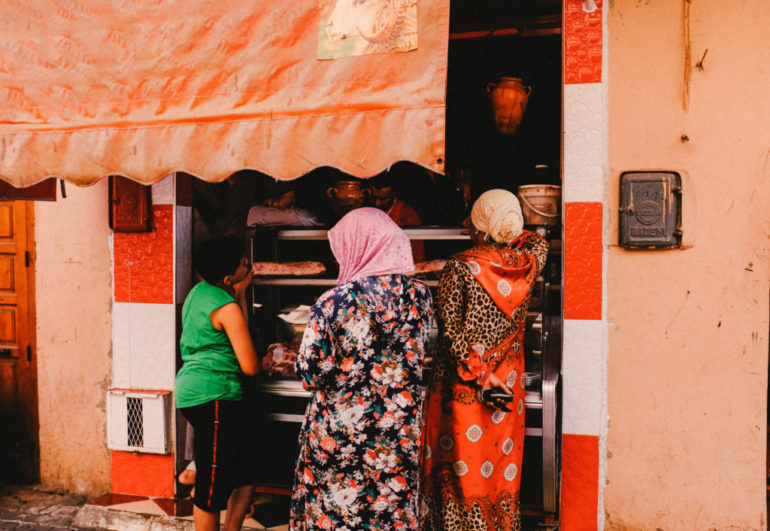Taking photos in Morocco: I’ve been yelled and pointed at, brushed away, even asked to show my phone screen as proof that I didn’t capture someone’s image.
A lot of locals here don’t like having their photos taken, for a variety of cultural, personal, and religious reasons. And that’s understandable—you don’t always want to have yourself preserved at a certain moment in time, your image in the hands of a stranger.
Without a foundation of trust, it can feel intrusive.
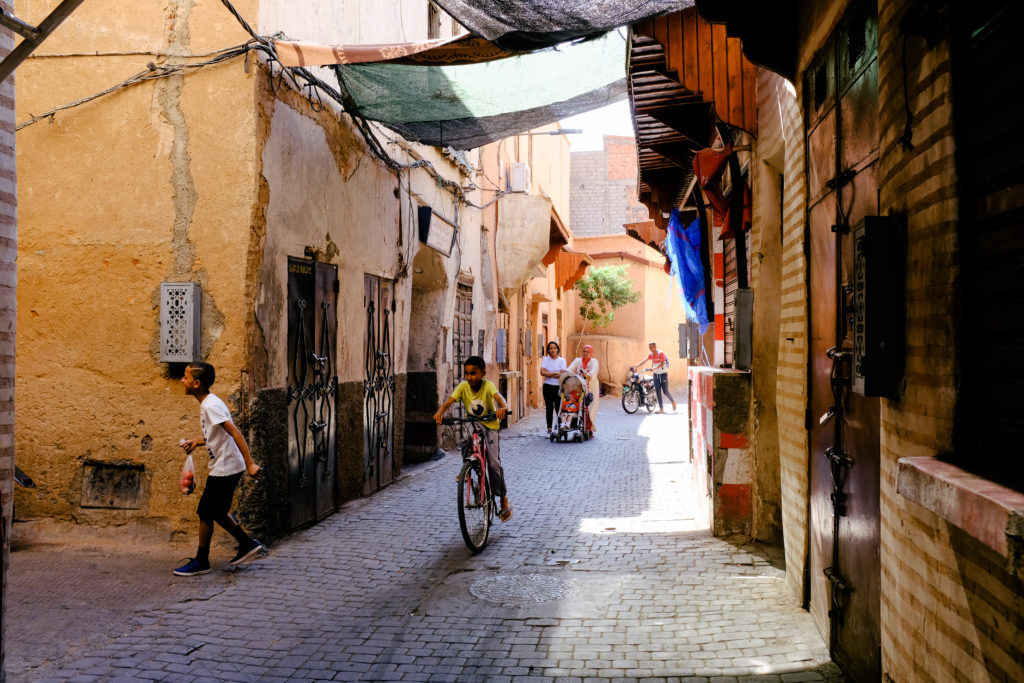
Trying to be respectful, I’ve tried not to focus my camera on anyone’s face without their permission—but in the process of capturing street scenes, quite often, people will be in your shot. It can be exhausting, worrying every time you lift your lens that you’ll provoke someone.
So, I found myself gravitating toward cats. They’re an easy subject: friendly, photogenic, lacking any degree of self-consciousness. There are street cats all over Morocco, and I spent days getting shots of them playing, rummaging through garbage, or hanging out in the local souks (markets).
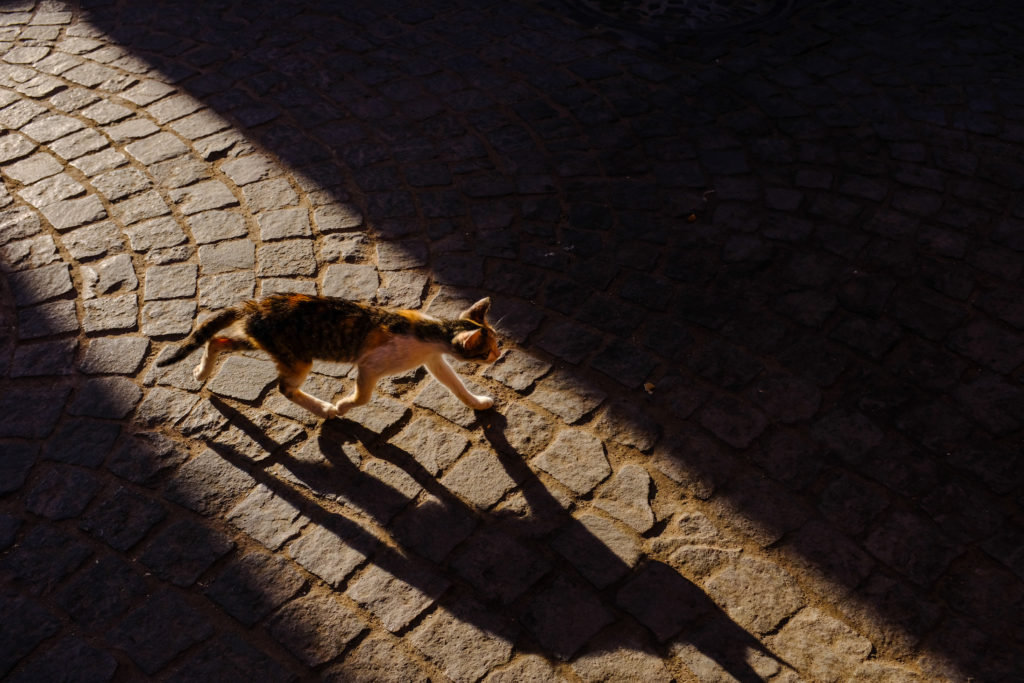
Photographing cats is what led me right back to people.
One day, Daniel and I were wandering the outskirts of Marrakesh’s medina, when we found an adorable orange kitten on the street.
Since I use a fixed lens camera (Fujifilm x100F!) I often have to get in weird positions to get the right shot. In this situation, I must have looked like I was doing a combination of a low Asian squat and front thigh stretch, trying to get as close as I could to the kitten without scaring it.
Suddenly, I heard a laugh, and a girl’s voice: “Oh, that’s my cat!” I looked up to find a young Moroccan girl, who said she had four others and asked if I wanted to see them. I hesitated, thinking it was an invitation into her house.
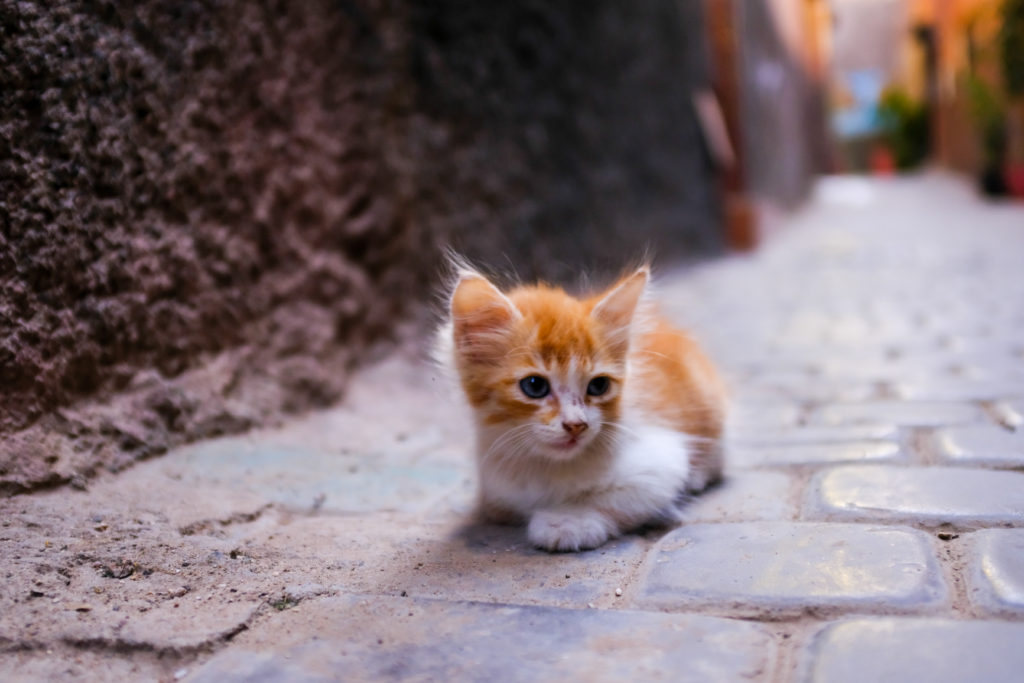
Instead, she went inside to get her cats, and brought them out one by one. Her mom came out as well, and we all started talking. I learned the girl, Lamia (name changed), was a first-year student at the local university and that her mom worked as a cook in a nearby riad (guesthouse).
Without knowing that I understood the language, her mom asked Lamia in French if she wanted to invite us inside. Lamia paused, not sure whether she should translate the request into English for us. “Do you want to come in for tea?” she finally asked.
This time, I agreed. For some reason, the familiarity of her reaction made me feel more comfortable. It was that pause that made me trust her; I recognized that feeling of not quite knowing what to make of a parent’s friendliness and social forwardness, but then going along with it.
Daniel and I sat down in their home and they brought out tea and pastries. I grabbed a pastry, but stuffed it in my pocket instead of eating it, still a bit wary about eating things served by strangers.
However, I started to feel more comfortable as we eased into conversation. Lamia’s father joined as well, the three family members eager to share their culture with us.
We spent a few hours in their home, laughing into the night, bonding over the chaos of sharing narrow walking streets with motorbikes, learning about cultural clothing like kaftans (long robes) and babouches (leather shoes) and the hammams (public bathhouses) where they liked to relax. They told us about the different types of Arabic, and shared their personal experience of fasting. We also learned a fun fact: turtles are one of the only other animals who fast.
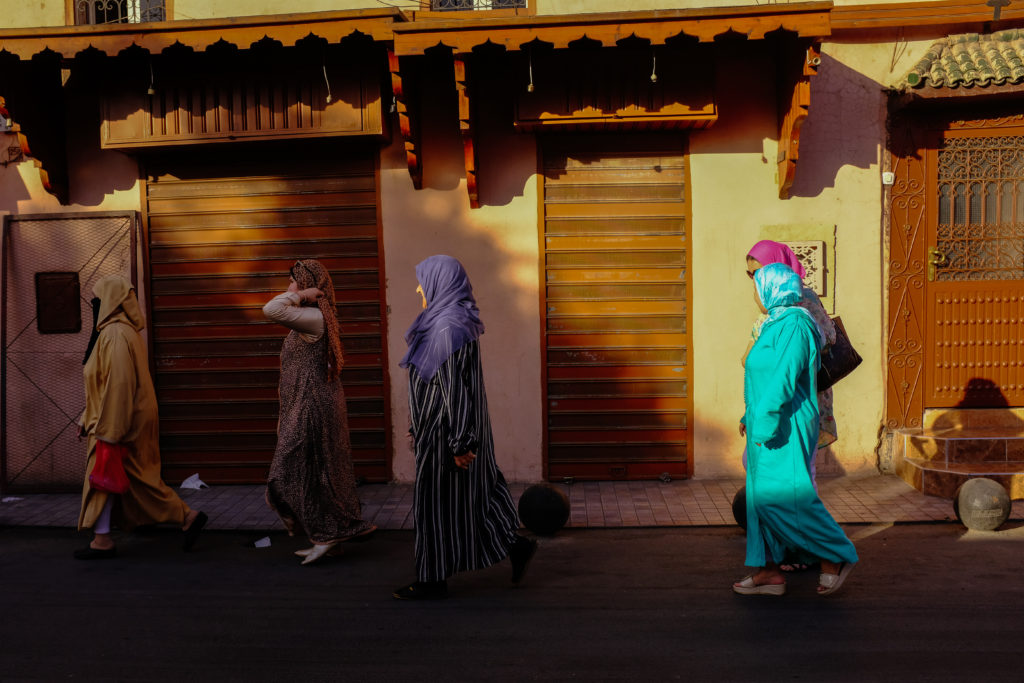
When we left, our hearts were full with that warm feeling of having made new friends.
We’d arrived in Morocco during Eid-el-Fatr, the festival that takes place after Ramadan to celebrate breaking the fast. Most stores had been closed, and many people were celebrating with their families, either in their homes or out of town.
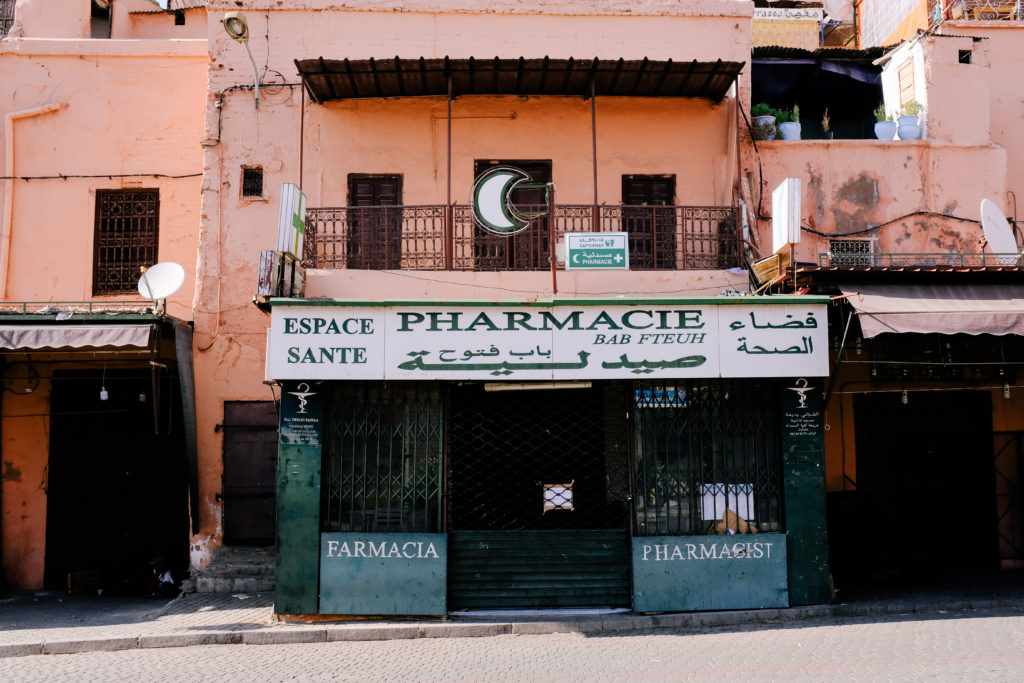
This was our first time interacting with local residents, really getting to learn about Moroccan culture, and we didn’t realize how important it was to us until it had happened. We appreciated that this family had trusted us enough to invite us into their home, despite the fact that we were just foreigners they found on the street.
Still, as we walked home that night, Daniel and I debriefed on how we shouldn’t have so easily entered the home of someone we didn’t know. We were fortunate that this family was genuinely good-hearted, but knew we still had to be more careful, especially in a different country.
After this experience, though, we were feeling more confident. We ended up making more friends: dancing with a group of women at a local Moroccan concert, trading stories with a Portuguese couple sitting next to us in an outdoor restaurant.
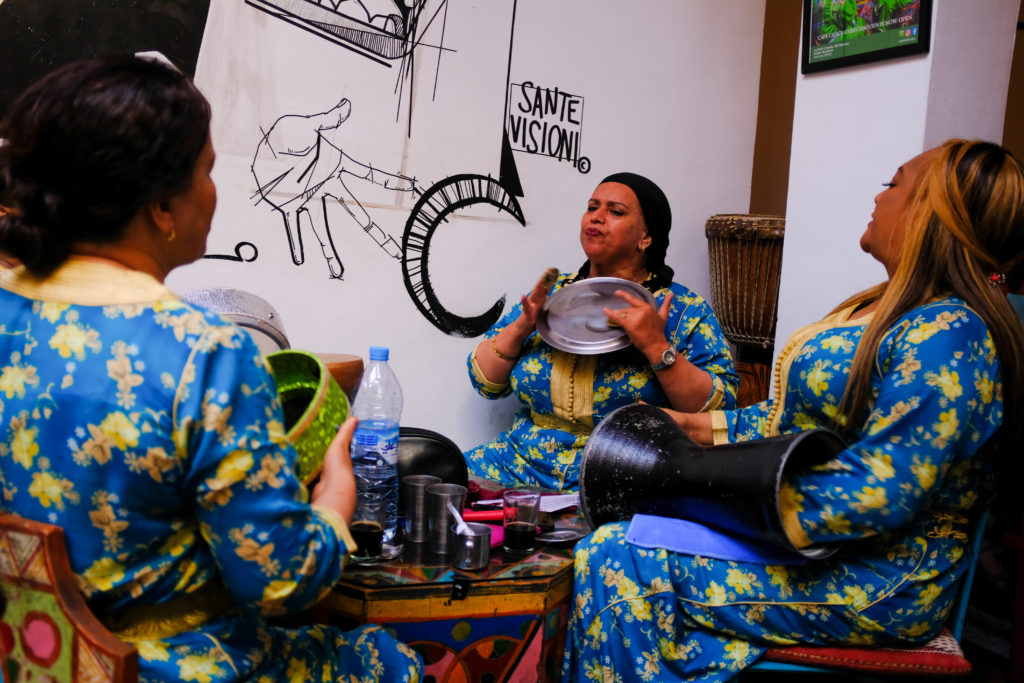
And, after taking a bus to a nearby coastal town, Essaouira, we continued the same habits. We chatted with the local fishermen, and one even showed us a shark he had caught that morning.
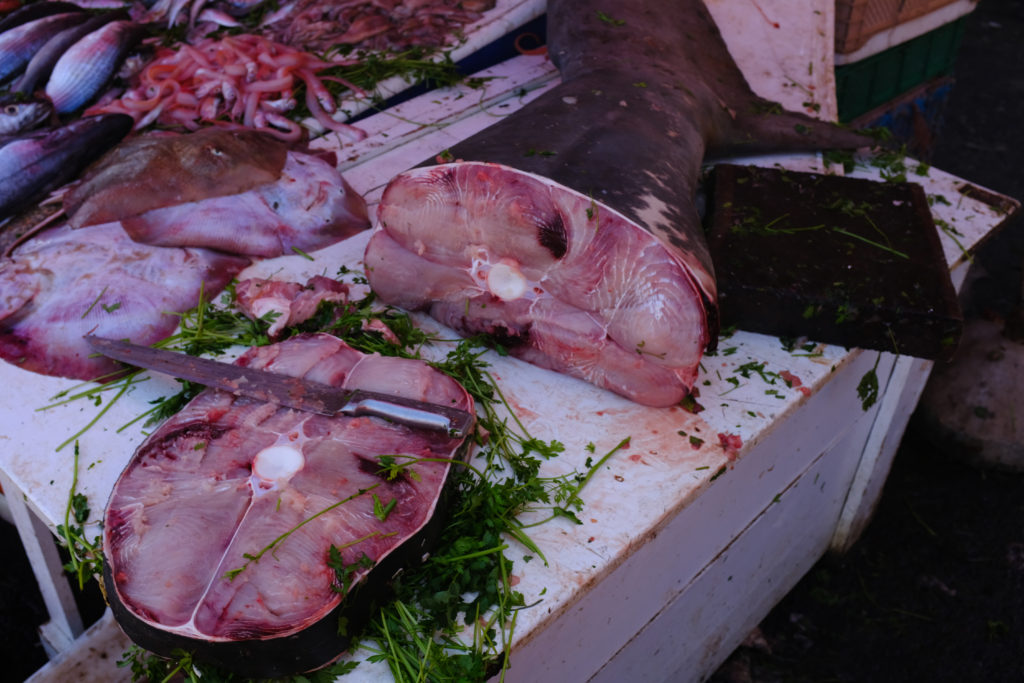
With their permission, I also took a photo of two fishermen sitting by the boats, because I loved their energy and the vibrant colors of their outfits. That was the highlight of my day, a sharp contrast to my earlier experiences of photographing people in Morocco. I was asking for their trust, and they gave it to me, without any suspicion and with a lot of fun.
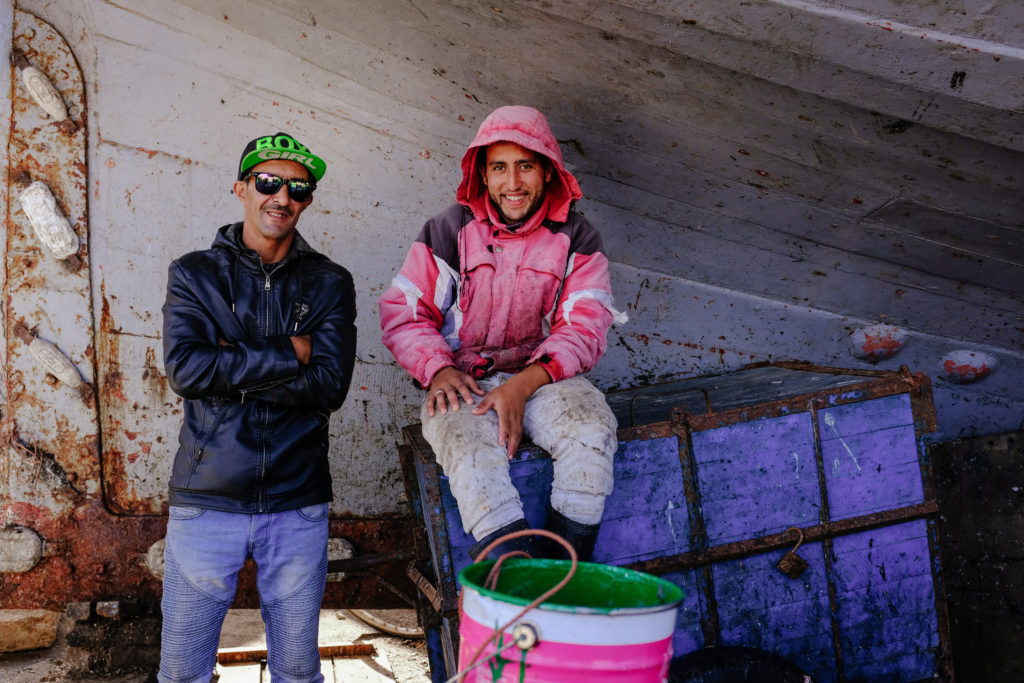
I started opening myself up to street photography once again, approaching locals to ask for their portrait, striking up conversations along the way.
We met an artist who illustrated local animals, and I took a photo of him as well. In his studio, we chatted amiably in French, exchanging fun stories of riding camels and getting pooped on by seagulls.
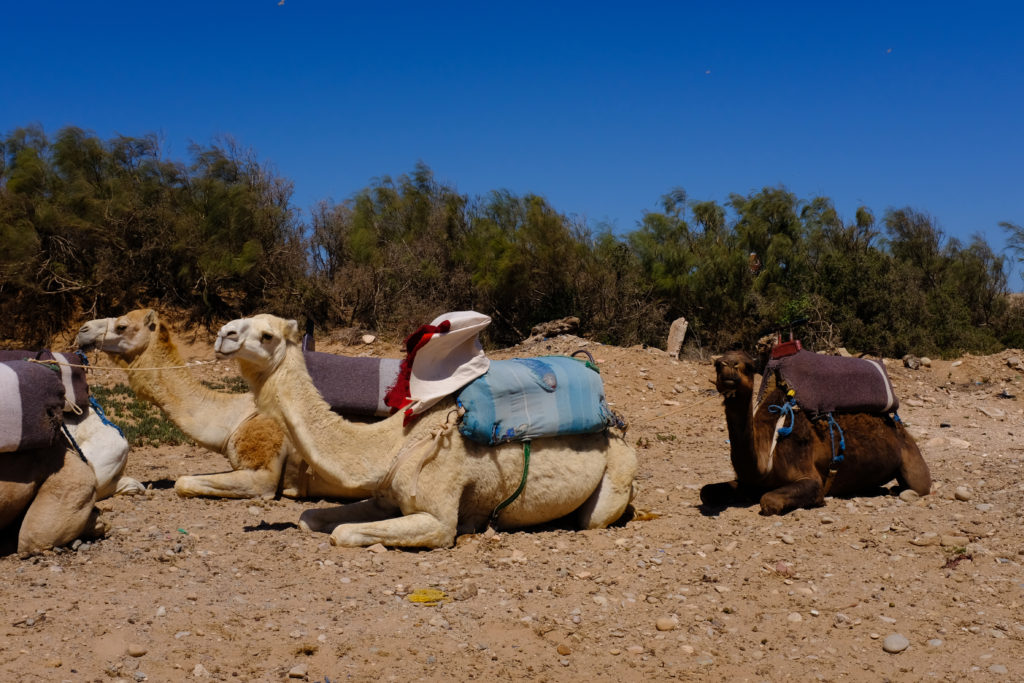
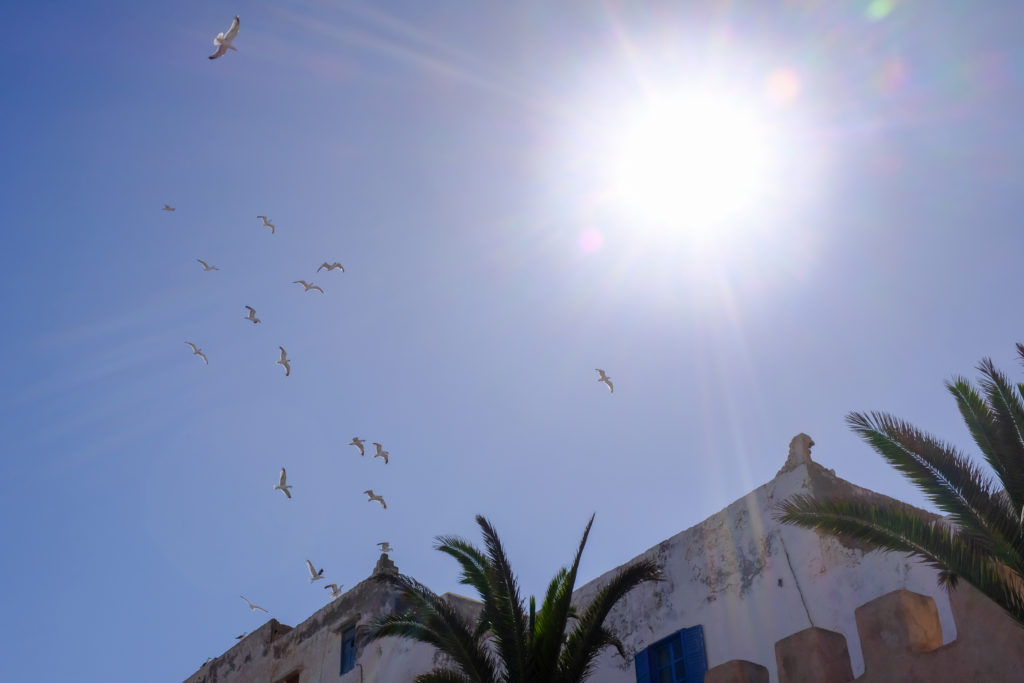
We wanted to buy one of his illustrations, but didn’t have room to bring a framed piece back with us—I asked if he sold anything smaller, like stickers or pins, but couldn’t think of the word in French.
He called over one of his English-speaking friends, who worked in the store across the street, to help us translate. The friend walked in, wearing a vibrant headscarf and a huge smile. He clasped both of our hands and kept saying, “Welcome, welcome, you are welcome here.”
We went back and forth, trying to get our message across. The artist’s friend kept thinking I was asking for a tattoo, or henna. When they finally understood what we meant, it was a moment of triumph, that struggle in language with our attempted miming gestures having bonded us.
The artist’s friend left, and we chatted with the artist about life in Essaouira before deciding to buy a postcard as a souvenir. We felt like we were starting to get to know this coastal town, just as we did in the high-energy city of Marrakech.
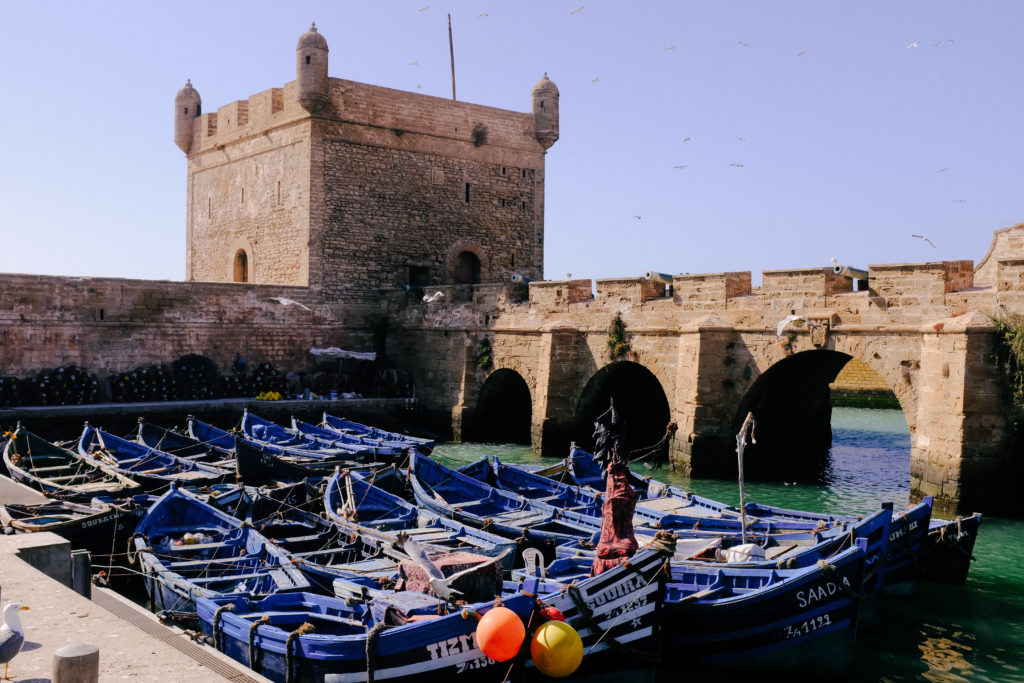
Walking out of the store, we saw the artist’s friend standing in front of his own store. He smiled and waved at us energetically, asking us to come in. Wanting to be respectful, we said a quick hello.
It was a tiny store, with cushioned seating filling the entire space, and barely any standing room. The artist’s friend invited us to sit down. He introduced us to his father, an old man with a twinkle in his eye.
The father asked us about our time in Morocco. He had a wide, toothless grin and spoke in a silky, smooth way that reminded me of a practiced salesman.
When we politely declined his offer of tea, he poured it for us anyway, even clinking the filled glasses on the table as a gesture that we should drink.
He talked about his identity as a Berber, and asked if we learned about their culture during our visit to Morocco. I mentioned visiting a Berber rug museum, and how I appreciated learning about the artistry and stories behind them, but he cut me off to ask about the cost—a surprising question, and I realized he was referring to buying rugs rather than the museum admission fee. This fixation on price made me believe he was adamant on selling something to us; perhaps, we were just a source of dirhams in his eyes.
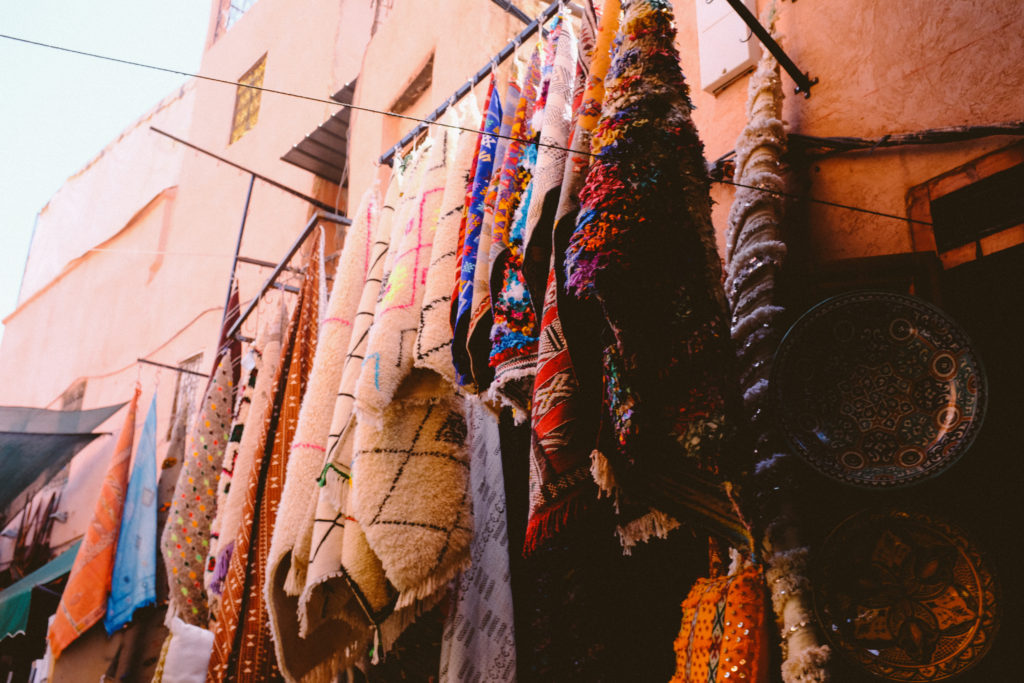
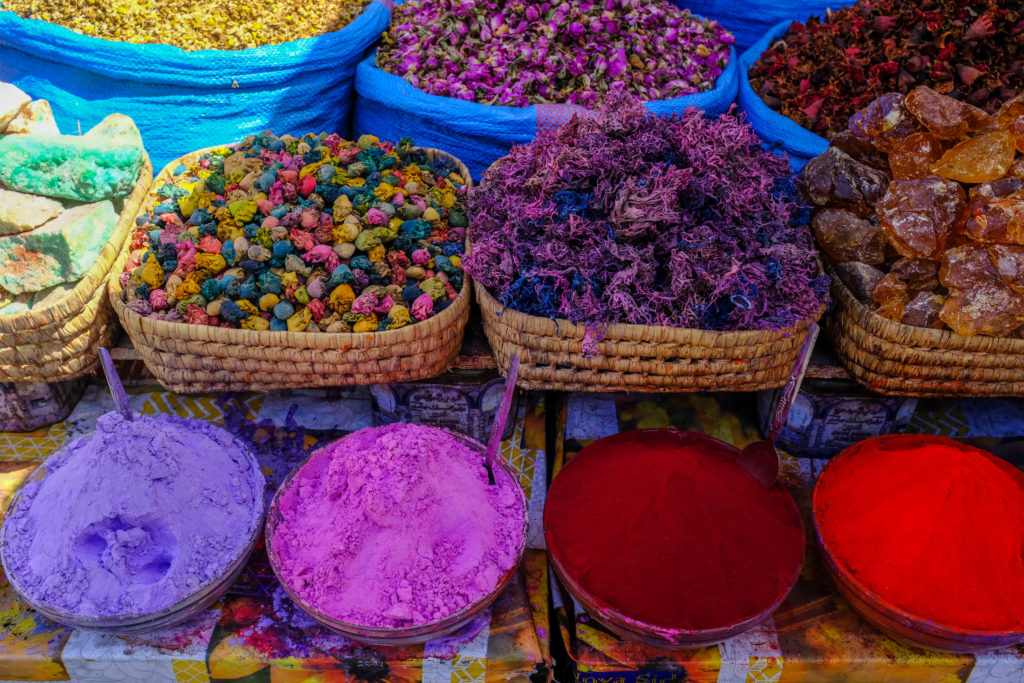
Surely enough, he transitioned into marketing his wares of tea and spices, rugs, and necklaces. To make matters worse, the artist’s friend soon left the store, opting to wait outside in the street.
As the conversation continued, and we made it clear that we wouldn’t be buying anything, the father started mocking us and making inappropriate comments about China.
At this point, we thanked him and left.
Though we had been cornered in stores before and dealt with our share of aggressive salespeople in the past, this experience felt more jarring.
Why did the artist’s friend leave? Was this all just a set up, because he saw that we bought something from the artist? And was even the artist in on it, when he introduced us in the first place?
As we processed this experience, we wondered what we should do in the future, how we can better read peoples’ intentions. How do you know who to trust, when cultural norms can be so different? When do you interpret something as friendliness, kindness, or generosity—and when should you be wary?
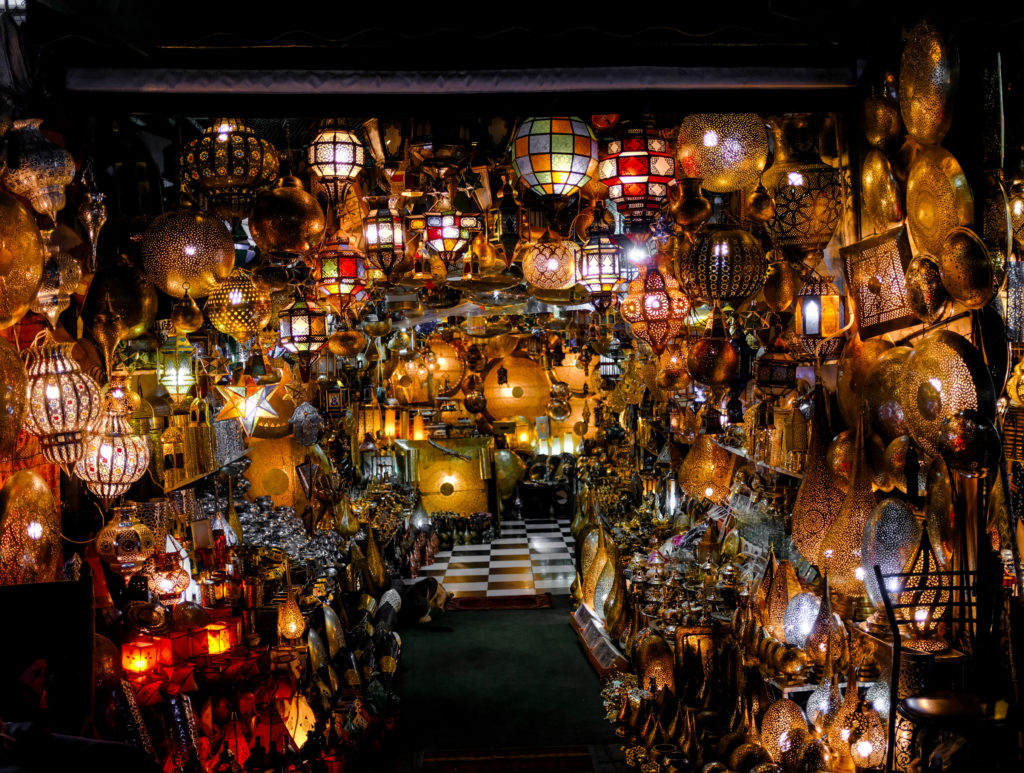
We reflected on other encounters we’d had in Morocco: the kids who followed us in alleyways, insisting that we were lost and offering to show us the way; men who offered to set up our SIM card and return in a few days if we just gave them a bit of cash; restaurant managers who stood outside their establishment every morning and told us that they would be expecting us later.
It cast a shadow on the people we met.
On the bus ride from Essaouira back to Marrakech, I ended up listening to The Slowdown, a daily podcast about poetry hosted by poet laureate Tracy K. Smith. She was my former professor at Princeton, and listening to her reflections felt soothing.
In this episode, she read a poem called “Safe House” by Busisiwe Mahlangu. It was about a person locking up her house, protecting herself against anyone who might come in—but then, it ends with the line: “we spent our lives waiting for thieves to come/ but they live in our house.”
In Tracy’s words, the poem “taps into the ways that fear itself, and the measures we take to combat what we perceive as danger, can become a kind of cage.”
It made me think about being over-protecting, how walling yourself off can steal from your own experience. And yet, keeping ourselves safe is also important. How do we find the right balance?
The most rewarding moments from this year on the road have involved trust: hitchhiking and then picking up a hitchhiker; living in strangers’ homes because they were friends of friends. We’ve been both the givers and receivers of trust, and this has richened our experience in each place we visit.
There have also been moments where I was far too wary, which did detract from my experience.
In Barcelona, a tourist asked me to take a photo of him in front of the Sagrada Familia. I instinctively replied with a quick “no, sorry” and walked away. Though I usually help with these asks, I’d been warned about pickpockets in the area, and worried that it would make me distracted.
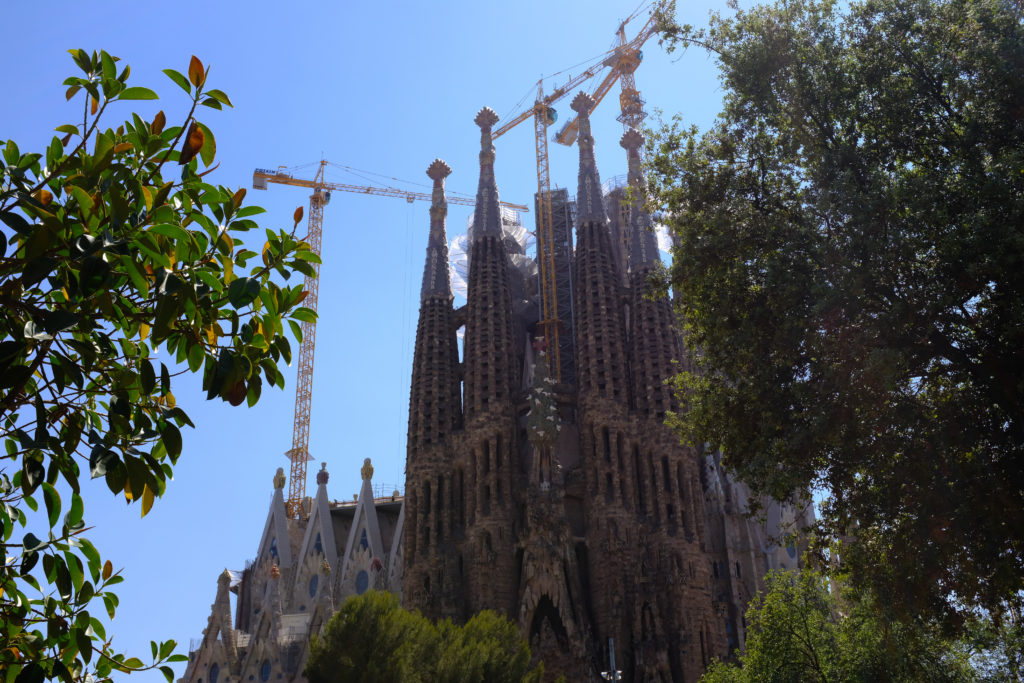
As I left, I looked back. The man’s mouth was open, his face genuinely surprised by my reaction. I wondered if it was his first day in Barcelona, too, and genuinely felt bad for giving him this impression of the city.
I wasn’t used to this kind of analysis, deciding who to trust despite not knowing how to read a situation through a different culture’s lens. Daniel and I felt exhausted at the end of each day, perhaps because of the constant stream of processing unfamiliar situations.
It makes me think back to street photography, how it requires trust in both directions: trust in the photographer making the portrait; trust in the subject to not react in anger or fear. I’ve regretted the times I’ve shied away from photographing people, simply because I second-guessed myself in the moment or felt awkward approaching them for permission. I’ve savored the times where I’ve made myself vulnerable; even when people turn me away, I feel that I’ve at least made a gesture and tried.
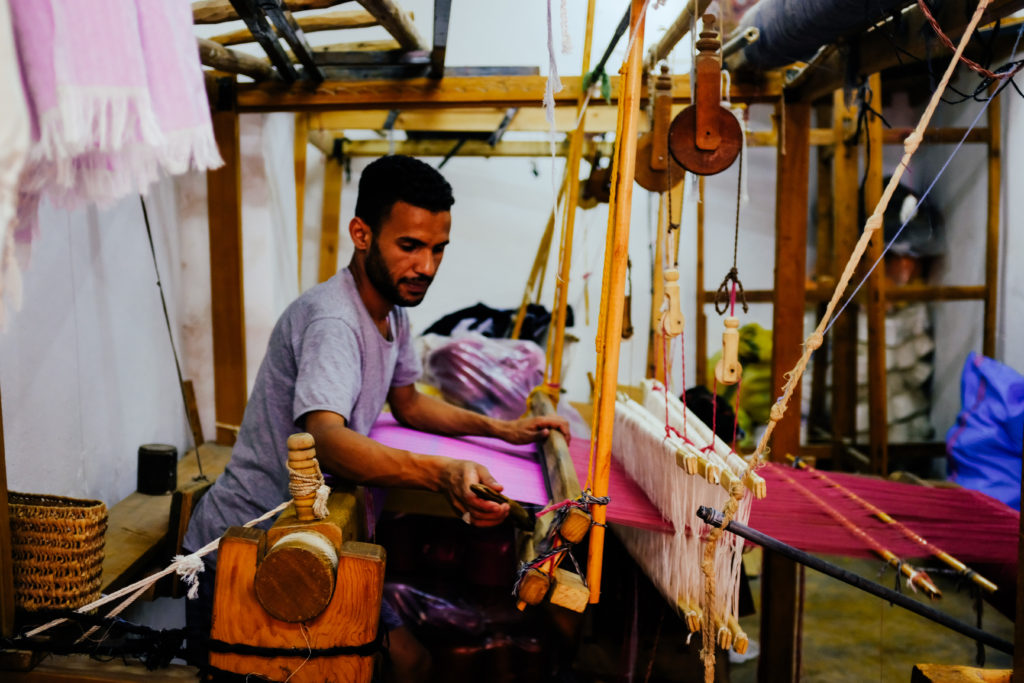
As I travel to newer and more different places, I know that questions of trust inevitably hold a certain level of risk; my choices will always be a balancing act between vulnerability and carefulness. Hemingway once wrote, “The best way to find out if you can trust somebody is to trust them.” There is no secret, no hard or fast rule around trust. We have only intuition; and for me, I will continue, voluntarily, to calibrate along the way.

